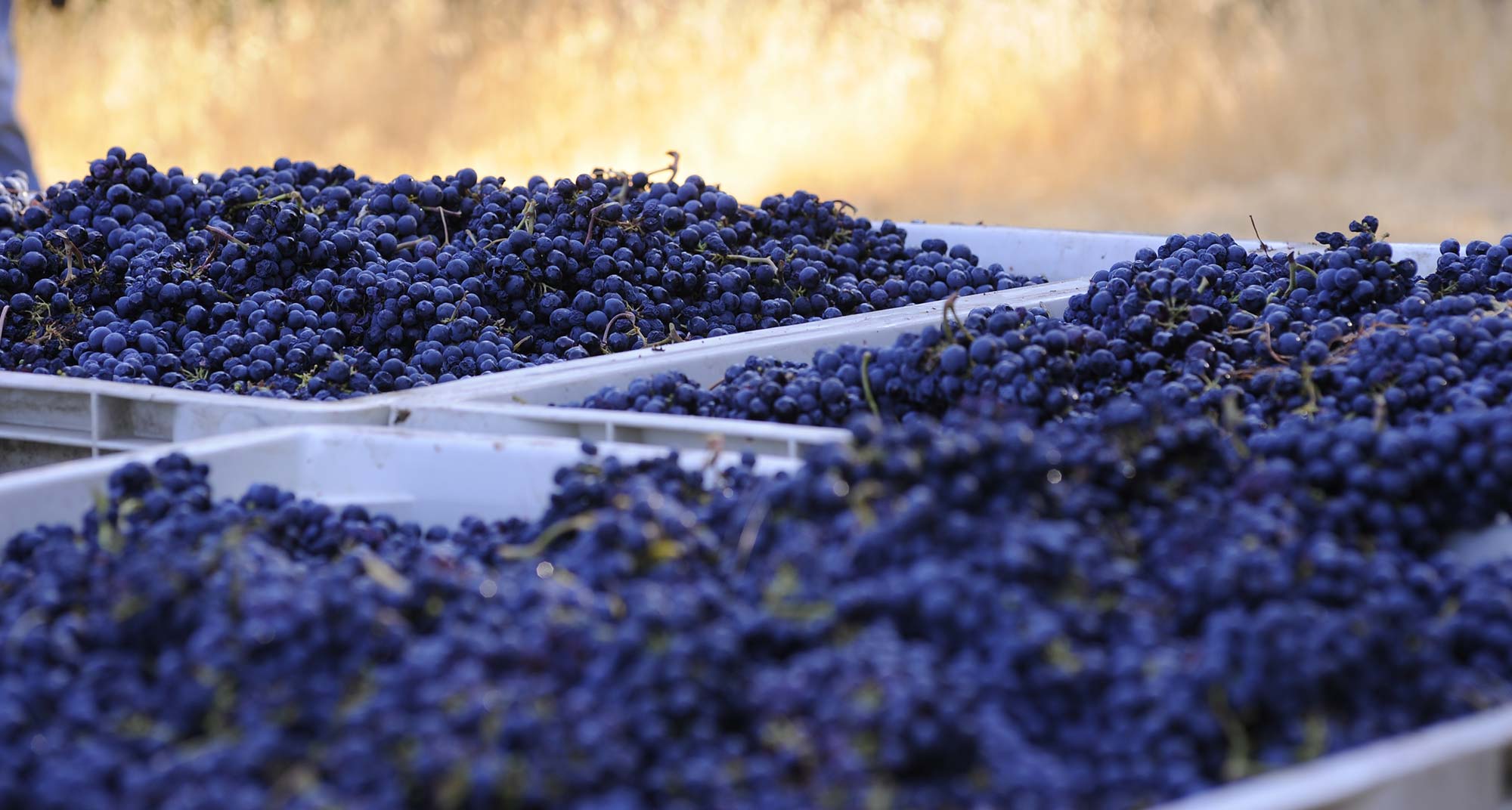$35 Flat Rate Ground Shipping on Orders of 6 or More Bottles

The weather is warm almost every day and we are getting very close to the call for pick. The fruit is developing sugars and the flavors and textures are coming along nicely. One of the last things the berries do to indicate their “physiological ripeness” is for the seeds in the berries to give up some of the hormones and other compounds they have stored for this time.
Unripe seeds are surrounded by the pulp, and early on have a slimy envelope. As they mature, the envelope degrades and the seed, initially bight green, begins to give up the green color which fades to a creamy white, then tan, then brown. The seed initially is soft and during this process shrinks and becomes small and hard, ultimately as protection against the environment until the seed, in the ground, can begin to grow.
The process where the slimy green seed becomes the brown hard seed does not take too long. The changes in flavor and texture are the things the winemaker is looking for and happen pretty quickly during this period.
It is during this period where weather can play an enormous role. For example, in a very hot year, the sugar levels can climb VERY quickly, yet the seeds remain green and slimy. Clearly the flavors have not kept up with the sugar rise and it is often you have to hope the heat will break, the nights will become very cool and the sugar levels will either hold or back away a little and allow the flavors to catch up.
If the weather is very cool and / or wet, the seeds will remain green, the flavors green and the sugars slow to ripen. Here is where molds and mildews can ruin your day.
The condition of the fruit is something for which the winemaker has chosen specific yeasts and bacteria. Yeasts are pretty cool in that they exhibit both “plant and animal” characteristics. Early researchers were surprised to see the metabolism of yeasts and muscle tissue were identical, essentially differing in the final end products of metabolism. Yeast “would make ethanol” and muscle would produce lactate” (simplistically speaking) What they found were the main differences in metabolism in an aerobic and anaerobic environment, (again simplistically) nevertheless the point was that the study of yeast has revealed an enormous amount of information in how eukaryotic (animal) cells operate.
In my early years there were only really 4 strains of yeast that you could buy for wine fermentations, and as often as not, you just allowed whatever indigenous populations that were on the fruit to handle the fermentation. It was not unusual for fermentations to have a problem finishing, so the use of “known” yeasts with “known” fermentation kinetics made life a little easier. Yeast, like any other living organisms have the ability to adapt and so they do. Some of the useful adaptations are the ability to ferment at cold or hot temperatures and the ability to ferment ever increasing amounts of sugar. Today there are well into the dozens of various strains of yeasts available, and the not only are the kinetics specified, but also many of the compounds (flavors and aromas and textures) produced. Many strains metabolic abilities are known so it is possible to find strains that handle higher sugar levels, lower biogenic amines levels and so forth.
There are yeasts that can do a better or worse job of fermenting the different sugars in wine production, that is glucose vs fructose, and yeasts that can be more or less susceptible to the influences of other microbiological competitors in wine must (Must is what the grape juice / mash is termed before it is alcohol… that is “wine”).
So, the winemaker is anticipating what the fruit is “supposed “to come in like, and has chosen yeasts to produce the aromas and flavors (that a particular strain is expected to produce) IN ADDITION to the aromas and flavors inherent in the particular varietal of grape picked. So, it can be seen that properly executed, the result of the action of the yeasts are to enhance, not necessarily “replace” the attributes of the base fruit. As the alcohols are produced by the fermentation (ethanol primarily), this will also “add” to the layers of “complexity” of the resulting wine.
Wine bacteria also play an enormous role in aromatic / flavor /texture of the resulting wine and “wine bacteria” are again chosen for their ability to NOT work “against” the yeast (interfere with the yeast metabolism) while at the same time possess the ability to finish their work in the presence of the activities of the yeasts. That is to say both yeasts and bacteria can produce compounds that are lethal to the other species. Certain yeasts can produce compounds that are lethal to other yeasts and certain yeasts can produce compounds lethal to bacteria (vice / versa) which can arrest a fermentation and make for a hard day.
Fermentation difficulties are pretty much a note all for itself, thankfully most fermentations complete without too much drama.